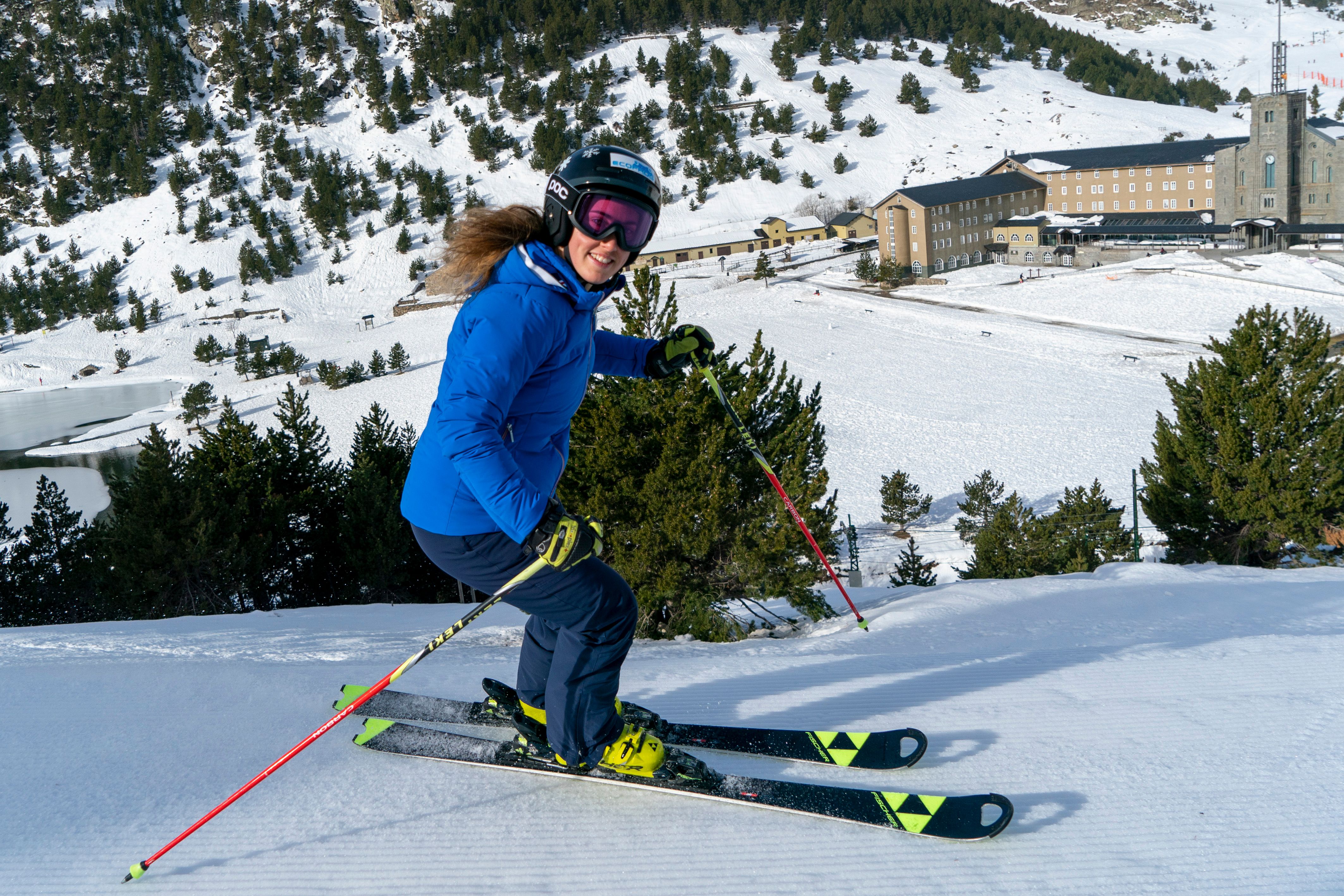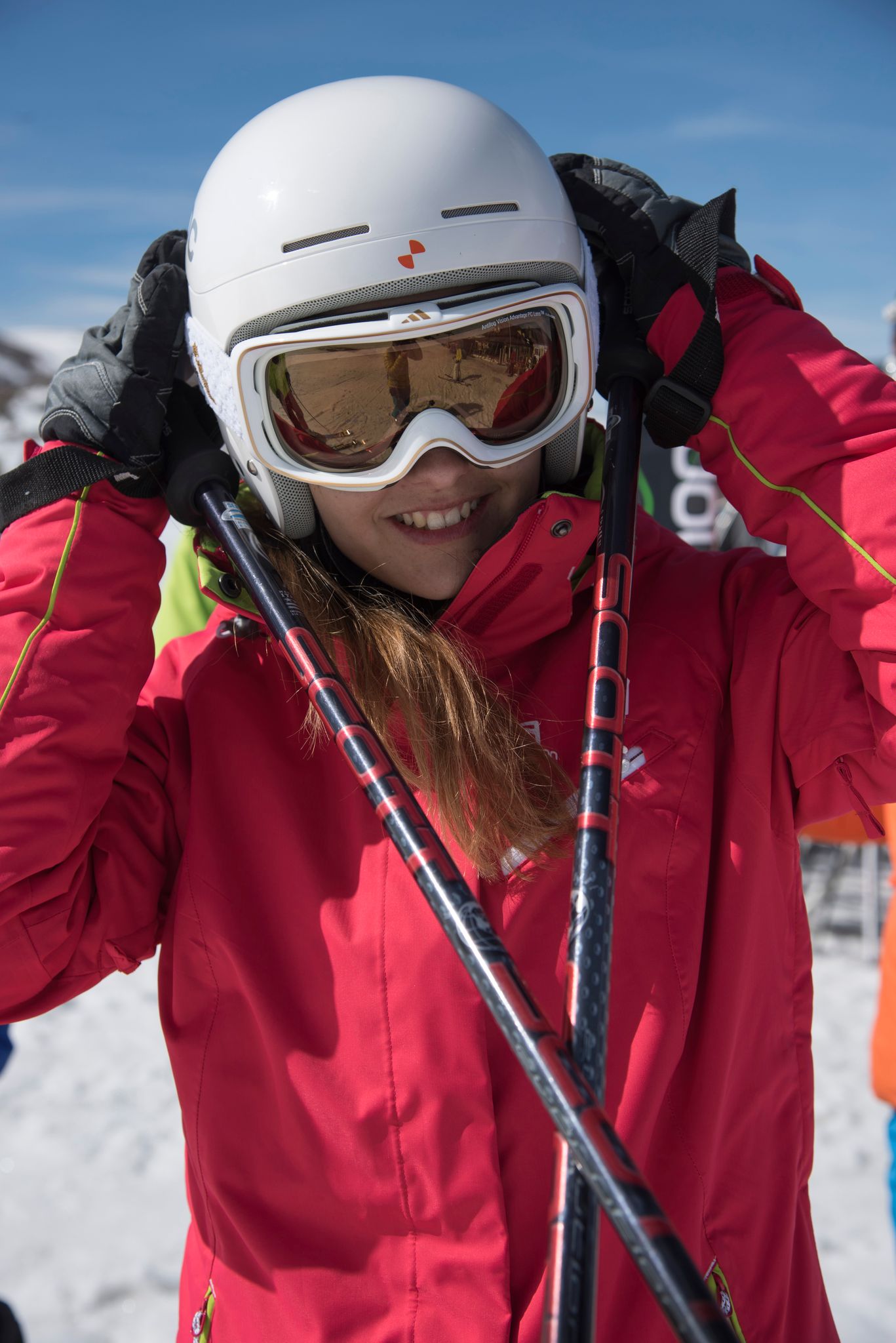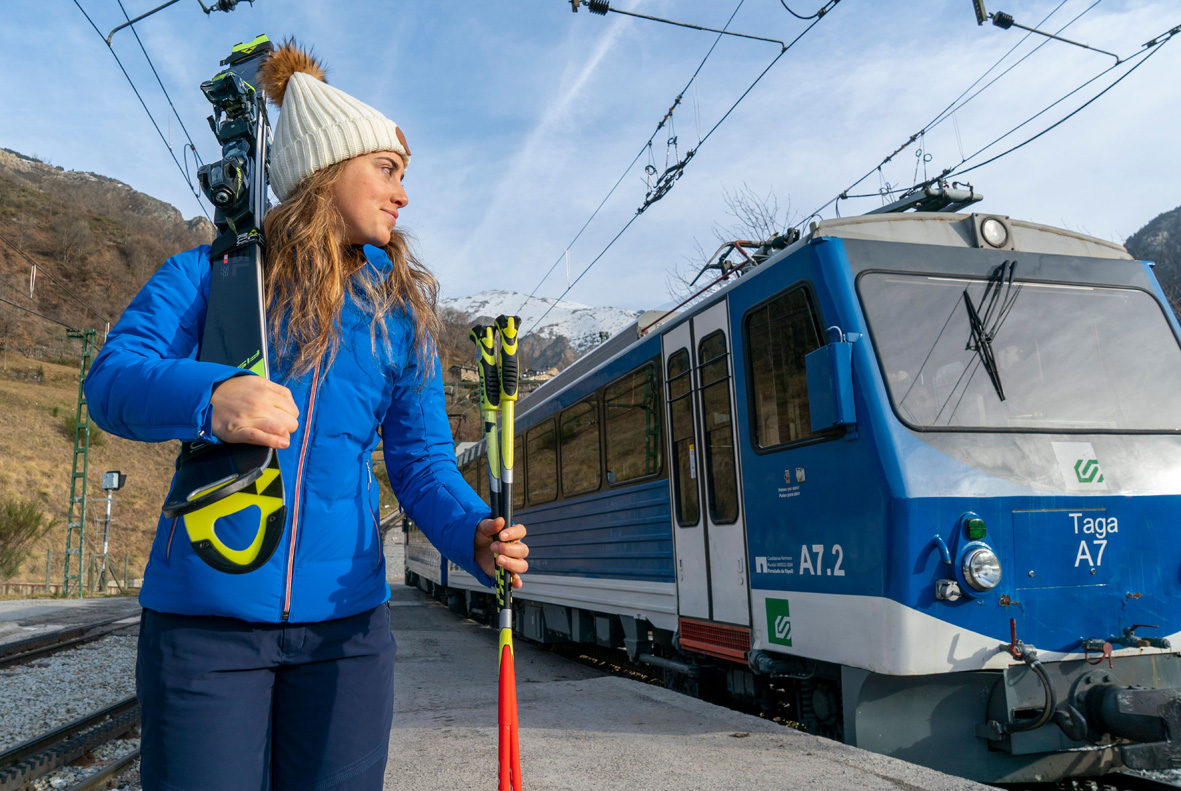Do you know what you need for a day of skiing?
If you don't know what to wear for a day of skiing, here you are some advices to know what type of clothing is essential to enjoy the snow while being well equipped and comfortable.
If you don't know what to wear for a day of skiing, here you are some advices to know what type of clothing is essential to enjoy the snow while being well equipped and comfortable.

Before going skiing, it is essential to be well equipped and not to leave anything behind. For this reason, we recommend dressing in different layers, but always with comfortable clothing that facilitates the escape of body moisture to the outside to keep the body dry.
1.1 FIRST LAYER
Thermal clothing can be used as the first layer. For example, a thermal shirt, thermal tights that cover the entire body and thick and long socks that can be special ski socks that are breathable and support friction. If you doubt the size of the socks, it is better to take a small size, since if they are large they can cause wrinkles and hurt us.
Thermal clothing allows you to be at a suitable temperature while giving lightness in movement.
1.2 SECOND LAYER
For this layer, he recommends using a fleece-type jacket that, depending on the weather, can be more or less thick, or a windbreaker jacket. These garments allow to maintain the body heat of the body while protecting from the cold and the wind.
1.3 OUTER LAYER
The outer layer would be made up of the ski jacket and pants. In the case of the jacket it is important that it is waterproof and light. In the case of pants, they must also be waterproof and thick, but allow maximum mobility.
In addition, it is advisable that the colors of the clothing are striking, so that in the event of an accident you can be located more easily.
2.1 SKI GOGGLES
As for accessories, it is essential to wear ski goggles at all times. There is also the option of wearing sunglasses, but in this case we recommend that they be glasses approved for the practice of snow sports.
The sun's rays that reflect on the snow are very harmful to the eyes, therefore, this accessory is essential. As for the type of goggles, the ski goggles fit perfectly to the head without falling off thanks to the elastic band. On the other hand, these types of glasses are not made of glass and in the event of a fall there will be no risk of glass entering the eyes or cutting ourselves.

2.2 GLOVES
Our hands must also be protected, since they are one of the extremities with the greatest sensitivity to cold. In this case, it is recommended that the gloves be waterproof and that they allow mobility in the fingers. It is important that the gloves fit snugly around the wrist to prevent any heat loss.
2.3 HELMET
The helmet is an essential element for skiing, because it protects the head from any fall and prevents serious injury. It is crucial to wear an approved helmet that adapts to the needs of each skier. The helmet must be rigid and cover the ears, because it protects at the time of the usual lateral falls.
2.4 SUN CREAM
Although sunscreen can go unnoticed, when skiing it is a fundamental element to protect the skin from the reflection of snow and cold. The cream should be applied between 15-30 minutes before exposing ourselves to the sun's rays and afterward, every two. If it is cloudy, you can renew the application of the cream every 3h or 3:30h. It is also recommended to protect the lips with special protection.
2.5 BREAK STYLE SHOES
After a long day of skiing, better than resting our feet from being all day with our boots on. Break-style shoes will be good allies to gain strength for the second day of skiing thanks to their lightness and material, as they allow the feet to relax and stay warm.
Knowing the size of the special ski clothing is easy, since it is the same as our usual clothing. But what about the size of the skis or boots, how do we know which one to choose?

3.1 SKIS
The skis must provide lightness in the glide while providing security and progression. In the case of size, the size will vary depending on the type of skiing that is practiced, for this the level of experience and the physical constitution of the skier (weight and height) must be taken into account.
In the case of alpine skiing, which is practiced on the ski slopes, it is important that they are quite narrow, since they are more reactive from one curve to another and their grip is better.
3.2 SKI BOOTS
The boots must form a perfect duo with the skis, they must be comfortable and provide enough support to protect the foot from possible injuries. Alpine ski boots allow little mobility and a stronger binding to the ski. Several elements must be taken into account such as the size, the flex, the shape of the shell and the shaft of the boot, especially for alpine skiing.
3.3 SKI POLES
Ski poles are considered the “forgotten of skiing”, and they may seem like they are just an accessory, but they help a lot to move and maintain balance. It is essential to find the right size and the model adapted to the type of ski.
A very practical trick to find out what size we need is to turn the pole taking the part that touches the snow and, therefore, that the handle touches the ground, if the arm forms a right angle, they are the correct size.